Warm And Cool Colors
Understand warm and cool colors and you will create stunning color schemes. (There's more to cool and warm colors than most people think!)
Definitions:

a) 'Warm' colors, in the most general terms, are related to the yellow/red side of the color wheel chart. They attract attention and are generally perceived as energetic or exciting.
b) 'Cool' colors, on the other hand, sit on the blue/green side of the color wheel; they are generally perceived as soothing and calm.
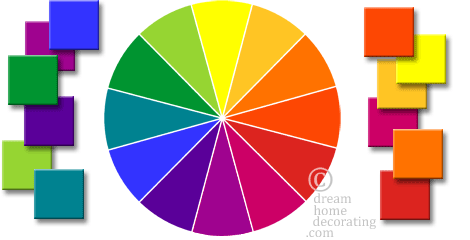
Is it really that simple?
No! Yellow and red are just more obviously warm than blue or green. But you'll see below that it's much more subtle and interesting than this!
'Cool' Yellow ... 'Warm' Blue?
In this graphic, one panel of colors is 'warmer' than the other.
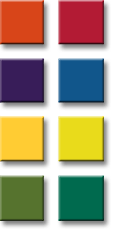
Which one is it? (I do hope both the warm and cool colors show clearly on your screen - it's always a bit of a gamble!)
If you can see that the colors in the left column are much warmer than those in the right, then the logical next question is ...
... how can there be 'warm' blues,
if blue in itself is a cool color?
The four-primary color wheel shows how this works:
A Color Wheel Chart That Explains
Warm And Cool Colors
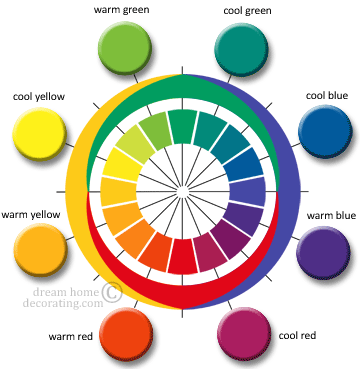
The outer ring of this 4-primary color wheel chart shows how neighboring colors "infiltrate" each other around the color wheel so that every color family (yellow, red, blue, green) ends up with a 'cool' and a 'warm' side:
- Cool yellow has a bit of green in it, warm yellow tends toward red.
- Cool red looks a bit bluish, warm red has a yellowish cast.
- Cool green has a blue bias, warm green a hint of yellow.
- Cool blue looks a bit green around the gills, and warm blue has a blush.
(You can find more info about this color wheel here.)
Now, does this mean there aren't cooler or warmer color groups? Of course not. Blue is still much cooler than orange, even if it's a 'warm' blue. But it's the subtleties that make all the difference in a warm-and-cool color scheme.
How Colors 'Change' Their Temperature
Talk about subtleties ... it's been proven that we humans are completely unable to see and remember how colors look in isolation, independently of their surrounding colors. This is because the 'background' colors can strongly interfere with how a color appears to us.
(This, by the way, is one of the reasons why modern art galleries & museums generally exhibit art on a white background.)
Let's put this to the test! Have a close look, if you will, at the central green squares in these two color blocks:
Which green is cooler than the other?

![]()
Even though the green square in the blue field looks 'warm' compared to the cold blue background, it is exactly the same green hue as the 'cool' green square in the bright warm yellow field. You can see it clearly against a white 'museum wall':

And if you connect the blue and yellow fields, you can watch the green color 'change character' mid-way:

So there you have it - things may not be what they first seem in the world of warm and cool colors. By the way, even neutral colors range from warm and inviting to very, very icy indeed (and yes, their 'coolness' varies depending on the surrounding colors as well :-)
For further color theory information & color inspiration ...
... Click A Pic !
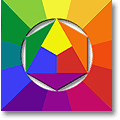 Online Color Mixing Wheel |
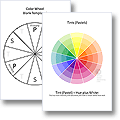 FREE Printable Color Wheel |
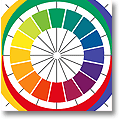 Online Color Wheel (Hering) |
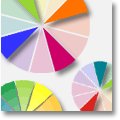 Illustrated Color Terminology |
Or, check out the chapters on:
If you're working on a home decorating project, you may also be interested in some of these color scheme books or portable color wheels (loads of examples of warm and cool colors):
Yet to find the information you're looking for? Type a word or phrase into the search box below:


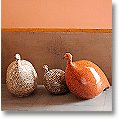
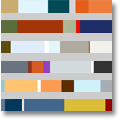
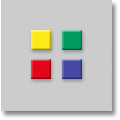
New! Comments
Have your say about what you just read! Leave me a comment in the box below.